The Safest Sailing Routes Around the World (Which to Avoid)
There are several ways you could sail around the world, but if you want to minimize the inevitable risks, there's really only one way to go. Let's take a look at places to go and places you should definitely avoid.
What is the safest sailing route around the world? Sail from the Atlantic westward to the Caribbean, using the trade winds, crossing the Panama Canal, the South Pacific Ocean, and then either around Cape of Good Hope or through the Suez Canal. The safest sailing conditions are along the equator since it provides the most reliable sailing weather and calmest waters.
There are certain places you want to avoid if possible, but you will need to compromise. Below, we'll explore how to find the right way for you.
Key takeaways:
- Avoid the Gulf of Aden, the Cook Strait, the Drake Passage, the Timor Sea, and the Southern Ocean if possible.
- Sail close to the equator and use the Panama Canal.
Trying to circle the Earth is fine. Doing that on a boat is among the most complicated ways to go about such a thing. The knowledge required and the number of variables that can go wrong is sky-high. But it is also among the most, if not the most rewarding ways.
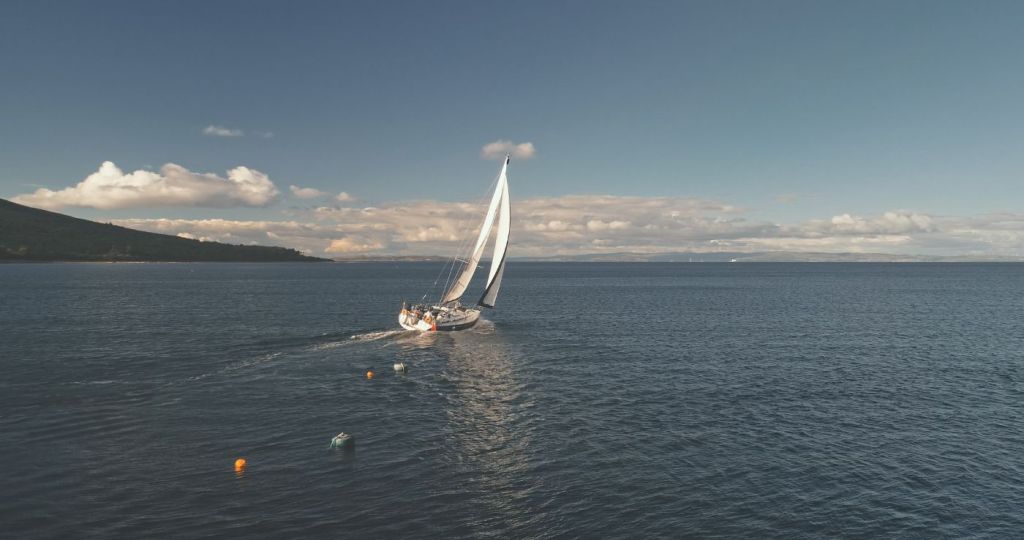
On this page:
Choosing the Right Path
Choosing the right route can be the difference between success and failure. If you choose the right one and time it well, it can be literally smooth sailing all the way, where your biggest worry will be the occasional maintenance.
If you choose the wrong route, though, you will have your hands full the whole time, and the chances you giving up will go up.
What are the best routes to sail around the world?
- The fast route - through the Southern Ocean. This route is fast but also more dangerous due to unpredictable weather.
- The pleasure route - staying as close to the equator as possible. This route will be safer, with more reliable sailing weather.
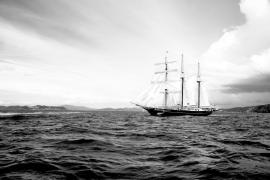
21 Places to Avoid Sailing Around the World (In Order)
Let's have a closer look at both of these - this is a big deal, so we gotta explore the details to know what we sign up for.
The idea here is to pick the safest one. And since safety is a relative term, let's have a look at two main points of view.
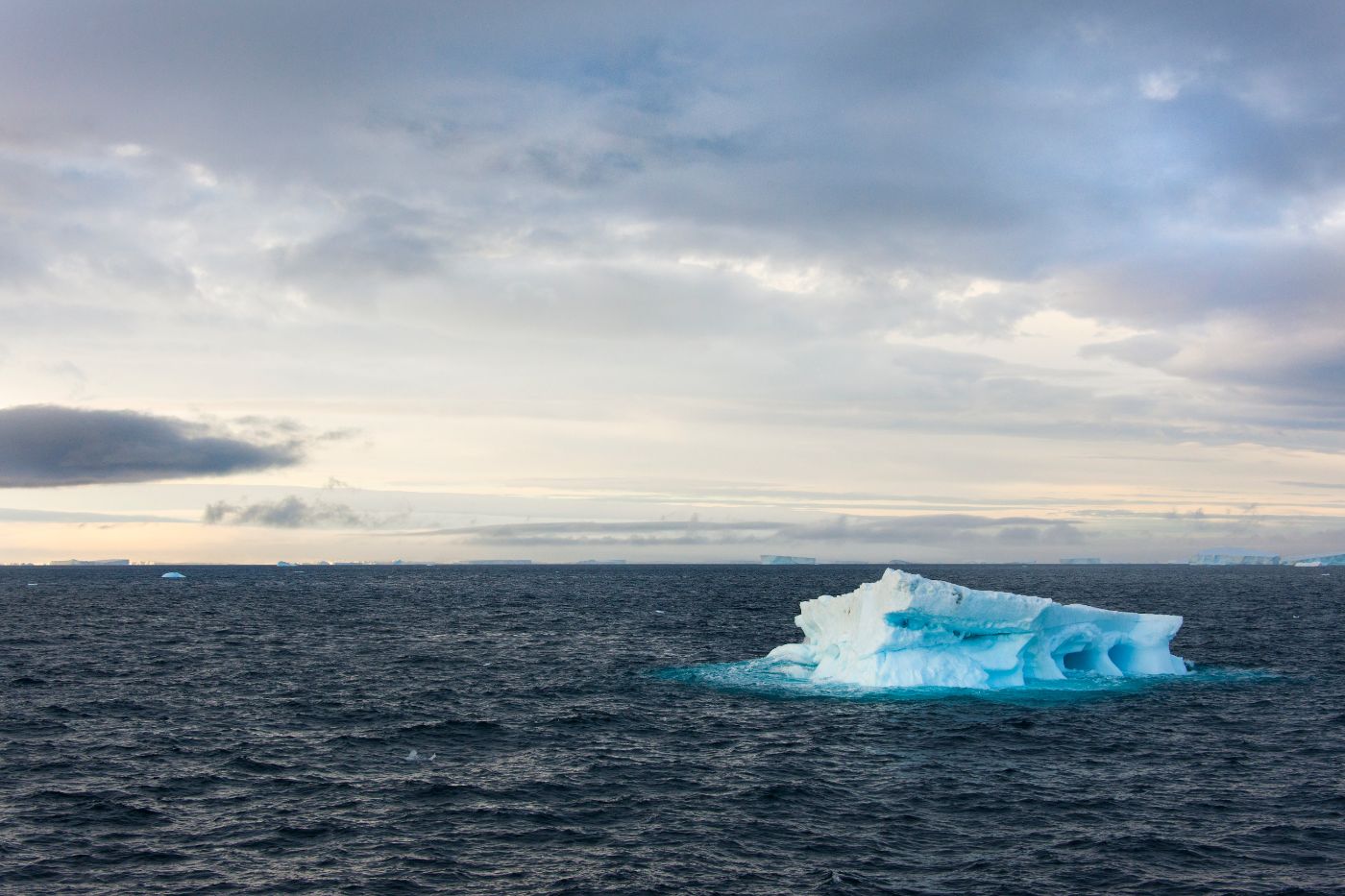
The Fast Route
What's the fastest sailing route around the world? The fastest sailing route around the world is the sail south from the Atlantic towards the Southern Ocean (Antarctica) and circumnavigate the world around Cape of Good Hope and Cape Horn. Sail back up north to the Atlantic starting point to complete the circumnavigation.
Being away on the sea poses risks - some of which you can avoid, some of which you can't. The conclusion being that the longer you are out there, statistically, the higher the chance something will break or that you will be unable to outrun bad weather - or that you will bump into something - since trash floating in the oceans and breaking boats is, unfortunately, a thing now.
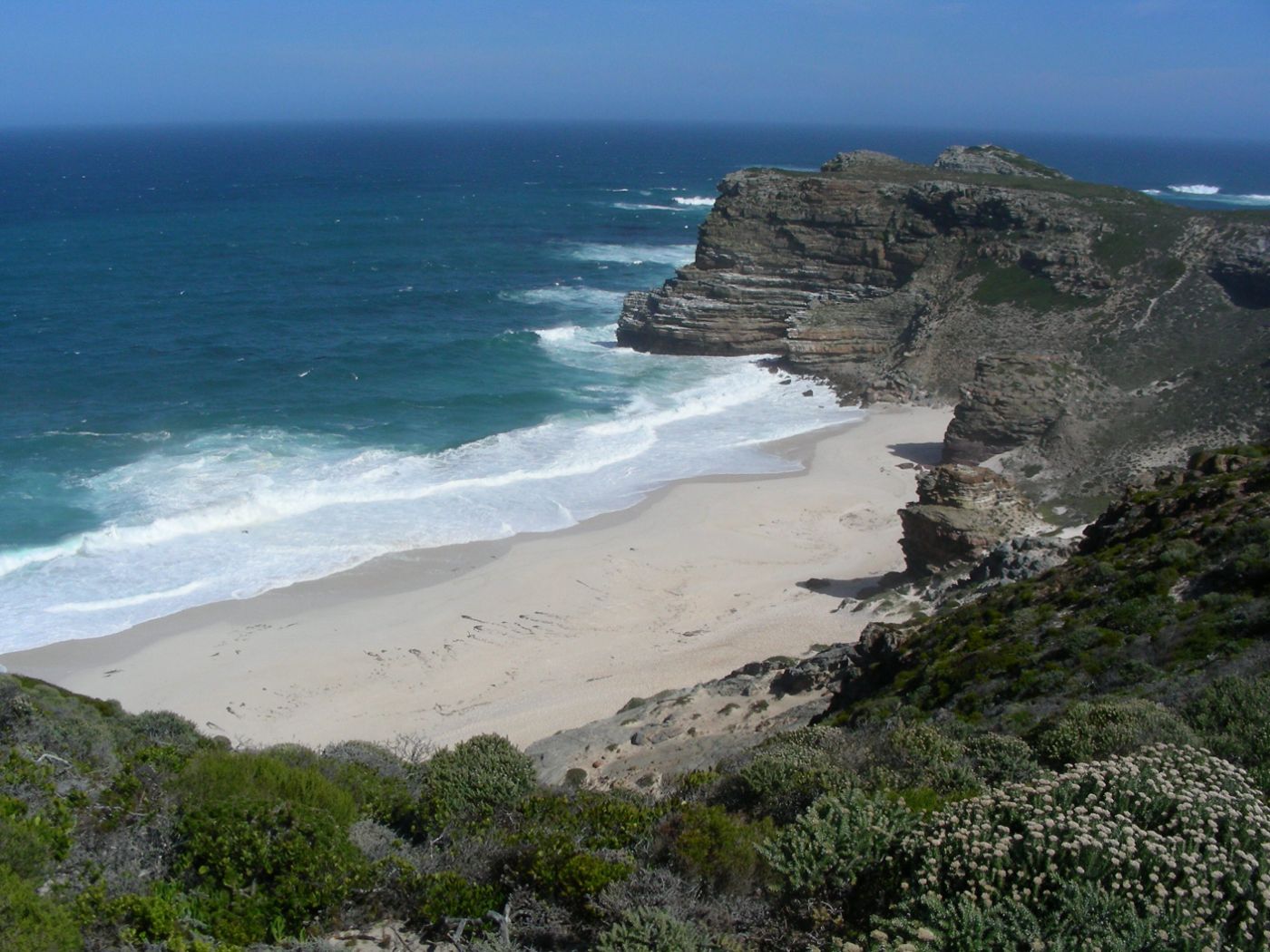
Wear and tear is an intrinsic part of sailing; many sailors say that. For instance, Atlantic crossing is more about maintenance than actual sailing skill. The longer you are out there, the more you expose your boat to elements, and things are bound to break.
Similarly, if you plan for a longer route, you have to have more things with you in terms of provisions and equipment. That means a heavier load on the boat, which affects handling and takes up space.
41 Sailboat Cruising Essentials
To get an idea of what you'll require to bring on a long sailboat cruise, we've made a list of 41 cruising essentials you should definitely bring along.
Read all about cruising essentials
And last but not least, there is the mental aspect of it all. Though you might feel up to the task now, being on the sea for a long time can prove tricky - whether that be because of loneliness (or the constant presence of people you might not see eye to eye with) the relative mundanity of the scenery or the lack of civilization.
So if you want to avoid all that as much as possible, choose the route chosen by those who are in a hurry - such as Vendée Globe racers.
The fastest route around the world
Starting in the European North Atlantic, this route runs south to the South Atlantic. Once it gets into the waters of the Southern Ocean (the one surrounding Antarctica), it stays there, circles the globe, around the Capes, and then up the South, and eventually up the North Atlantic again.
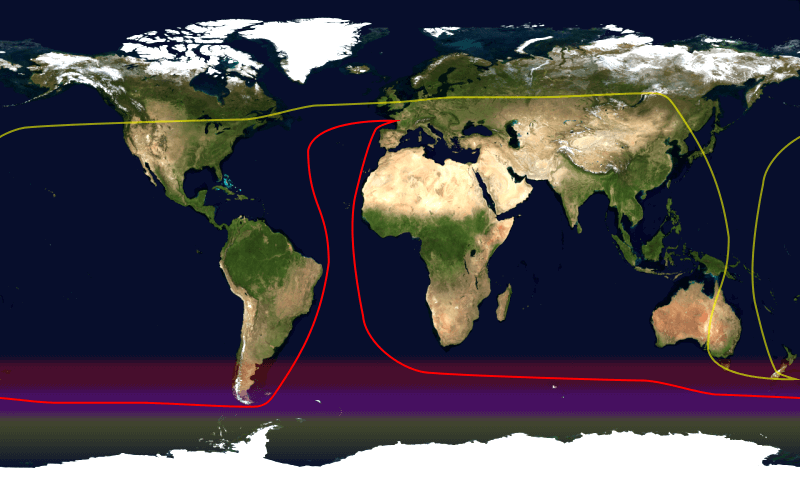
Know that this is not really much of a scenic route or a route that would show you the most interesting parts of the world - it is solely aimed at getting around as fast as possible in the most straightforward way possible.
As mentioned, the overarching principle here is to make the journey as fast as possible - and that is where the safety of this route lies in - exposing yourself to the risk for the least amount of time possible. That being said, be careful around the Cape Horn - an infamously tricky place to navigate.
And for those of you who are looking at the globe while reading this, thinking it is a bit of cheating - since you don't really go around, but circle the globe at its thin end - know that the length of this route is more or less 26,000 nautical miles, which is very roughly the length of the equator. So you will be doing the work in the end.
The Pleasure Route
What's the safest sailing route around the world? The safest sailing route around the world is to stay as close to the equator as possible to make use of the more favorable winds there. This route requires sailing through the Panama and Suez Canals, the Caribbean, the Mediterranean, the South Pacific, and the Atlantic.
The above route might be fast, but it is about technically getting around, not really about the enjoyment of the world you are circling. So if that is what you have in mind, if you are not particularly in a hurry and don't mind stopping here and there to enjoy the local cuisine and whatnot, this one might be for you.
Speaking of stopping, the above route also doesn't allow for many stops. And that is what the safety of the Pleasure Route lies in. It keeps you close to the coast quite often, so you don't have to plan as much when it comes to consumables, spares, and energy - and if something breaks, you can dock at the next opportunity and have it repaired.
You will never be far from civilization (as far as circumnavigations go). With all the ports available, situations that would otherwise prove risky, like running low on water or wear and tear, can be tackled with relative safety.
The safest route around the world
This route runs from the Caribbean through the Panama Canal, then crosses the South Pacific to get to the shores of Australia, then through the Indian Ocean towards the countries of Southeast Asia and maybe India, then down towards South Africa with a stop or few on the way, eventually getting into the South Atlantic and back to the Caribbean.
If you find yourself in Europe, you will probably get to the Canaries first, then continue to the Caribbean. And similarly, towards the end of your route, after passing South Africa, you will go up to the Canaries and then back to Europe.
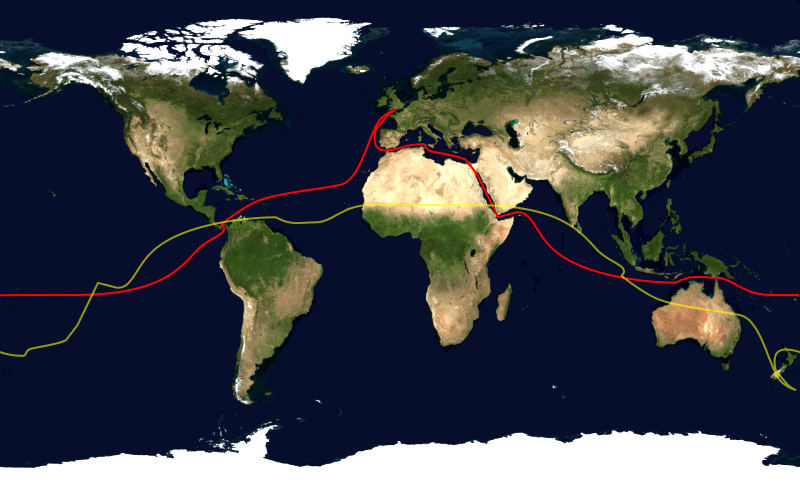
Looking at the map, you will see this route certainly doesn't have speed in mind but rather providing the traveler with enough opportunities to stop and admire. You can see Panama, then stop at Galapagos, visit the Pitcairn Islands, New Zealand, Australia, Indonesia, Srí Lanka, India, Madagascar, South Africa… and that is just touching on to the major points of which there can be twice as much if you want to.
If you read diaries of those who went down this route, you will see this is indeed the case most of the time - stopping at a place and enjoying it, rather than leaving the port immediately after a shopping trip and a good night's sleep. It is a great way to get to know the world from many sides and is the true traveler's path.
How long does it take to sail around the world?
It can take anywhere from 100 days up to 20 years. We've compared three sailing speeds for both sailing routes for you.
Read all about circumnavigation speed
What Routes To Avoid
There really is no whole route that would pose risks, rather places you might feel enticed to go through to save time, only to regret this later. We have picked out places that you are likely to want to go through if you circumnavigate, so have a look and if you see your picks below, be careful.
The Gulf of Aden is pirate territory
Among these is the Gulf of Aden. All those films about pirates hijacking cargo ships? Yep, that's the place. Just about anybody will strongly advise you against it since it poses a man-made danger like no other place on the sea in the world. Why do people still take it when going from the Mediterranean to the Arabian sea or vice versa? Because the alternative means a circa 17,000 kilometers long detour around the whole continent of Africa.
The Cook Strait and Drake Passage are very unpredictable
Also, avoid the Cook Strait, a passage between the North and the South islands of New Zealand. These are among the most unpredictable waters in the world.
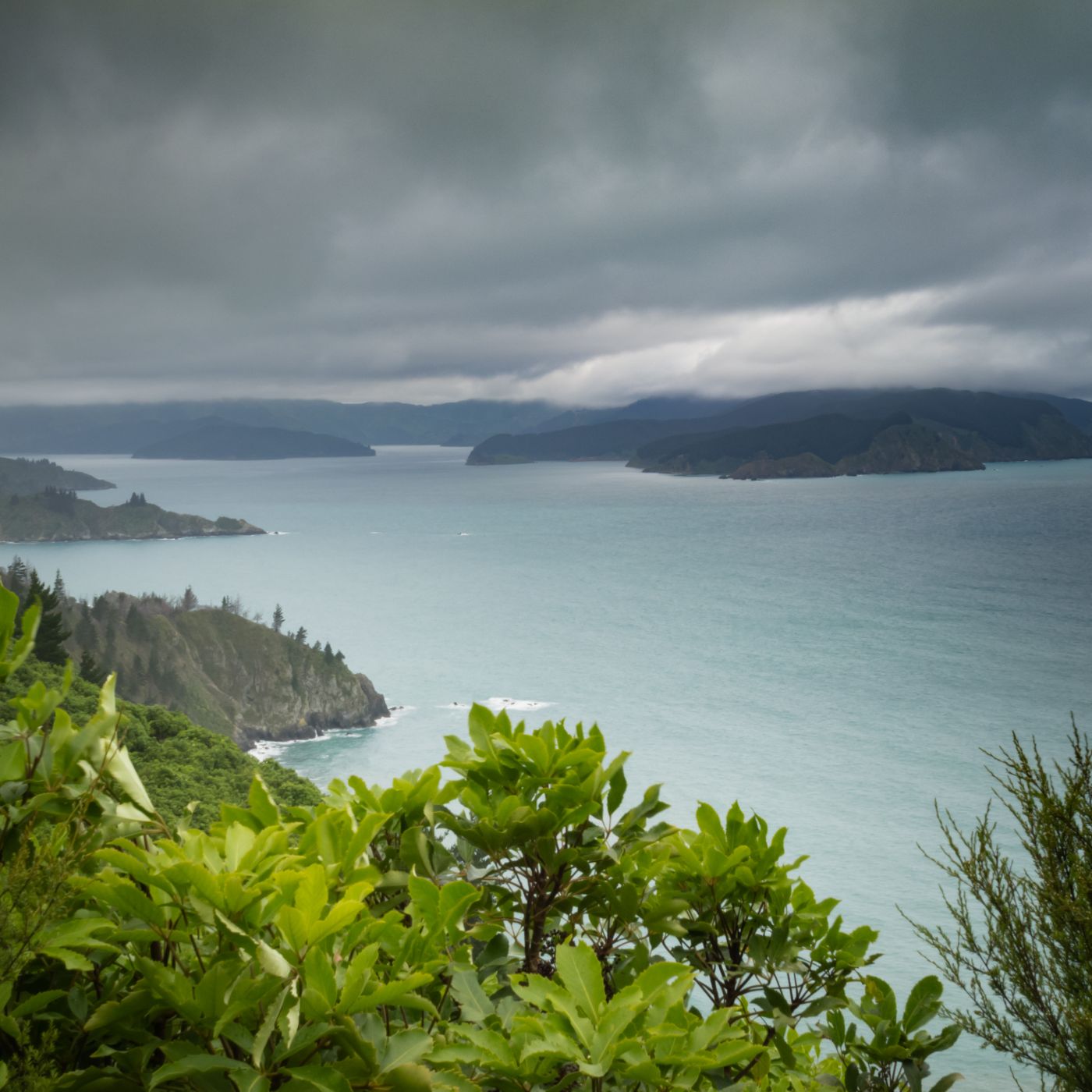
The same goes for the Drake Passage, between the southernmost tip of America and Antarctica. High winds, very strong currents, and high chances of icebergs make this a deadly zone. We list it in the Fast Route, and it can be navigated without damage, but it requires skill. If you are not confident, avoid it.
The Timor Sea has 100 storms per year
Timor Sea - if you go north of Australia into the Southeast Asian regions, be careful - 100 storms per year is nothing out of the ordinary here. Even big oil rigs have to be constructed differently there to withstand the constant bad weather, with evacuations of the workers to the shore being nothing special.
The Southern Ocean is difficult to navigate
The Southern Ocean. Yes, yes, I know, the very route we suggested. While it is true what we said, that it is the fastest route around the globe, it is where the freezing waters around the Antarctic meet the warm waters up north. That results in storms and swells, which, paired with icebergs and the whole place being remote, thus unlikely to offer much help, means one tricky ocean to sail through.
Just as is the case with the Drake Passage, the idea here is not to forbid you from entering it, if you have got the skill - but rather to warn you if you do not.
Conclusion
The two routes mentioned above are among the most famous ones - one for speed, one for its beauty. They both have their advantages and disadvantages but are often traveled, so as far as safety goes, both have a lot to offer. Choose wisely.
Did you find the answer to your specific question?
👍 67 👎 9
Comments
Chocolate Angel Richardson
iS THERE ANYWAY TO GET THIS ARTICLE? iT ONLY PRINTS OUT WITH A BUNCH OF ADVERTISEMENTS. i DON’T SEE A PRINT ANYWHERE??? tHANK YOU
william wieckert
Awesome 👏
Sissy Rosenstein
If I go near Somalia what are my chances of getting gang raped by pirated?
Francis Drelling
Your articles on this topic are great. Do you think you might write one simply telling the best, and the worst, times to sail in the warriors regions where people circumnavigate? That way we could use it as a guide as we ponder our routes.
Thanks,
FD
Lee Piola
would like to find out about the red tape involved for entering a forign port/country & staying awhile
Confused
Your safest path around the world takes your right through the Gulf of Aden, which in the next paragraph you say to avoid.
NoobEgg40
You don’t build a barn dumbass. What do you think this is, 1785?
Leave a comment